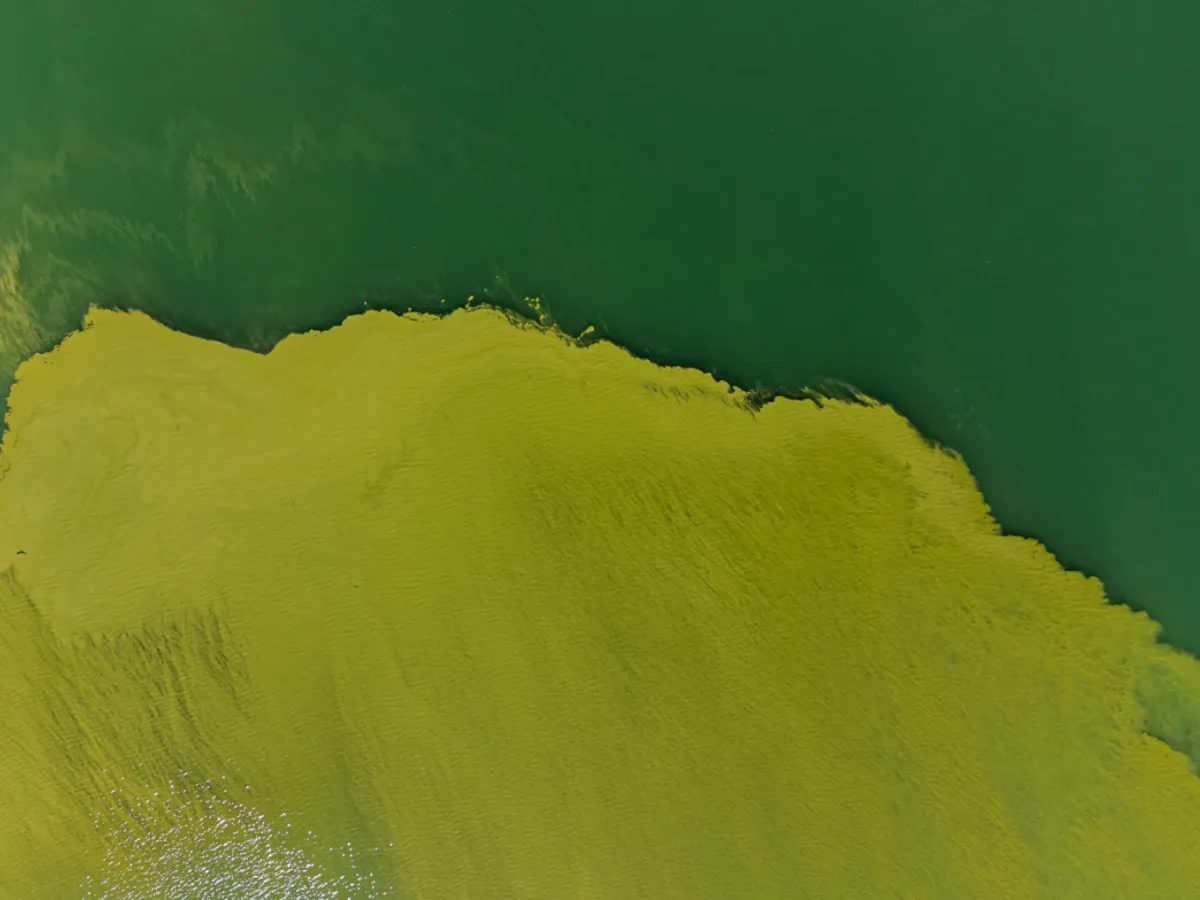Swiss Authorities Warn Against Blue-Green Algae In Lake Lugano
-
Deutsch
de
Behörden raten wegen Blaualgen im Luganersee zu Vorsicht
Original
Read more: Behörden raten wegen Blaualgen im Luganersee zu Vorsich
+Get the most important news from Switzerland in your inbox
Significant exposure to the algae and can cause skin reactions, gastrointestinal complaints or even liver problems.
Between the Gulf of Riva San Vitale and the lake dam at Melide, Lake Lugano the water is once again partially yellow-green instead of blue. The reason is blooms of cyanobacteria, as blue-green algae are known in technical jargon.
+ No single cure for toxic blue-green algae: Swiss researchers
The phenomenon has intensified in recent days and the blue-green algae have spread as far as the Gulf of Agno, the Ticino cantonal chemist announced on Friday.
Swimming in Lake Lugano is therefore not recommended where there are dense and extensive blooms that resemble a carpet. According to the cantonal chemist, cyanobacteria are present in high concentrations in these areas and pose a high risk to humans and animals. Typical for such a high occurrence of blue-green algae is also a turbidity of the water.
If a section of the lake is only partially infested with blue-green algae, there is a medium risk. Swimming in such areas is not recommended for people with sensitive skin, small children and animals.
The Ticino authorities therefore recommend swimming only in clear water at a visibility depth of one to two metres and avoiding visible accumulations of cyanobacteria. After swimming, people should shower and dry your skin thoroughly.
Information signs in the lidosAccording to the cantonal laboratory's protocol, the affected municipalities and lidos have put up appropriate signs at most access points to the water, the press release continues. A flag system is also used on monitored beaches to indicate the level of danger.
The main cause of these blooms is the massive proliferation of Microcystis, a genus of cyanobacteria that can produce toxins. Blooms of this type are favoured by nutrient input into the lake and high temperatures. They typically occur in the second half of summer.
Translated from German with DeepL/mga
We select the most relevant news for an international audience and use automatic translation tools to translate them into English. A journalist then reviews the translation for clarity and accuracy before publication.
Providing you with automatically translated news gives us the time to write more in-depth articles. The news stories we select have been written and carefully fact-checked by an external editorial team from news agencies such as Bloomberg or Keystone.
If you have any questions about how we work, write to us at ... .
Related Stories Popular Stories More International Geneva Warfare rewired: drones and civilian risk Read more: Warfare rewired: drones and civilian ris
Legal Disclaimer:
MENAFN provides the
information “as is” without warranty of any kind. We do not accept
any responsibility or liability for the accuracy, content, images,
videos, licenses, completeness, legality, or reliability of the information
contained in this article. If you have any complaints or copyright
issues related to this article, kindly contact the provider above.
Most popular stories
Market Research

- Latin America Mobile Payment Market To Hit USD 1,688.0 Billion By 2033
- BTCC Announces Participation In Token2049 Singapore 2025, Showcasing NBA Collaboration With Jaren Jackson Jr.
- PLPC-DBTM: Non-Cellular Oncology Immunotherapy With STIPNAM Traceability, Entering A Global Acquisition Window.
- Bitget Launches PTBUSDT For Futures Trading And Bot Integration
- Ecosync & Carboncore Launch Full Stages Refi Infrastructure Linking Carbon Credits With Web3
- Bitmex And Tradingview Announce Trading Campaign, Offering 100,000 USDT In Rewards And More






















Comments
No comment